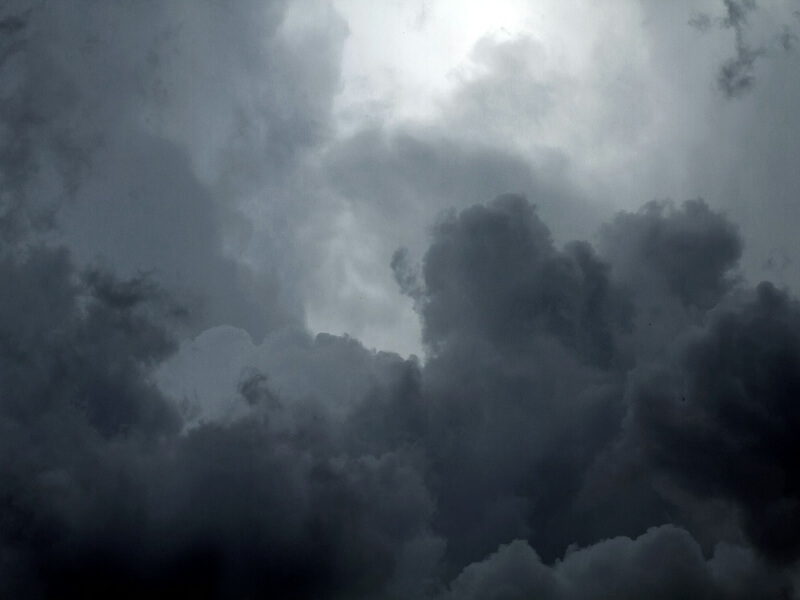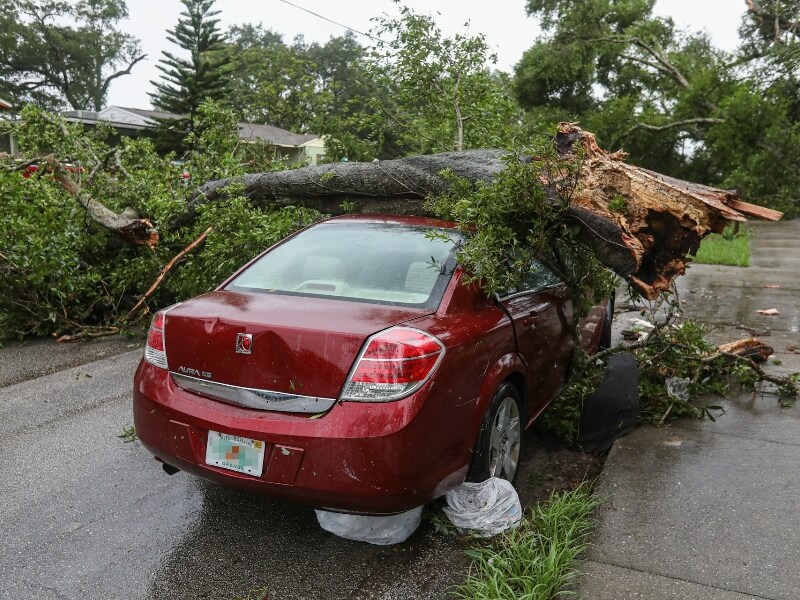 Category 5 hurricanes are synonymous with extreme catastrophic damage. A sustained wind speed of 157 mph or faster can blow framed homes to pieces.
Category 5 hurricanes are synonymous with extreme catastrophic damage. A sustained wind speed of 157 mph or faster can blow framed homes to pieces.
The remaining ones with relatively intact roofs and walls may lose electricity for an extended period. This calamity can knock down power poles, disrupting public utility services in the affected area for weeks or months.
No technology can change the trajectory or weaken a Category 5 hurricane yet. However, your house doesn’t have to be a sitting duck when a natural disaster of this magnitude occurs.
Take these five steps to ride out the rollercoaster ahead.
Hurricane-Proof Your Yard
Prepare your yard for menacing tropical cyclones before June 1 of any year — the beginning of the six-month Atlantic hurricane season.
Start with the trees within your property. Trimming renders dead branches nonfactors during a violent wind event. Pruning removes undesirable limbs, especially those towering over your house that break things in half upon impact and cause severe injuries.
Sometimes, mature trees need to go. Those in unsuitable locations are prime candidates for removal because they can do more harm than good. Arborists are a better fit for this job than landscapers. These tree surgeons are adept in cutting down massive woody plants with precision and control, preventing accidents. They can also diagnose tree diseases and pest problems, offering expert advice on how to deal with them.
Not all tree care companies employ arborists, so ensure a business has one to tackle this project with peace of mind. Moreover, identify anything in your yard that can go airborne when a powerful storm strikes your area. The usual suspects are potted plants, patio furniture, gardening tools and playhouses. A portable fire pit is light enough to drift in the air and crash into your house.
If you have rock and gravel in your yard, replace them with lighter alternatives because heavier landscaping materials can batter your property like hail. Hurricane-force winds can also turn fixed structures, like bird feeders, into projectiles.
Store them indoors until the bad weather passes temporarily. Is your garage at capacity? Consider renting adequate self-storage space. Figure out the logistics to transport your valuables immediately when you hear a storm forecast in the news.

Reinforce Your House
Whether you intend to weather a Category 5 hurricane at home or not, your property must be in top shape to withstand the elements. Tightly sealed houses have the highest chances of survival during a devastating windstorm. Openings let in hurricane-force winds wanting to push up and out of the property, displacing your roof from underneath.
Schedule roof, siding, window, and door inspections and repairs before hurricane season. You can never be too careful, so book credentialed professionals to evaluate your home exterior even when you see no signs of damage.
Caulking wall openings, installing garage doors optimized for impact protection and wind pressure, and upgrading to sliding doors with tempered glass are vital measures to boost your house’s defenses against Mother Nature’s worst. Equipping your exterior doors with three hinges or more and a one-inch deadbolt lock elevates wind resistance.
Many homeowners board up their windows for protection. However, plywood is no substitute for hurricane windows — fenestration units designed with impact-resistant glass and reinforced frames.
Plywood typically isn’t strong enough to hold up in the face of high winds. This material becomes flying debris when a hurricane reaches a speed of 150 mph, let alone more than 200 mph. Plus, plywood can rot, making it an undesirable layer of hurricane protection.
Installing hurricane windows makes more sense. Aside from being durable, they’re also shatterproof. They keep your home safe and dry even when an airborne object breaks them.
Update Your Insurance Policy

Category 5 hurricanes are costly natural disasters. Being adequately insured against every possible peril gives you one less thing to worry about if you lose your valuables in a windy affliction.
For instance, many Hurricane Katrina survivors found it difficult to rebuild their flood-damaged properties for being uninsured. Most of them couldn’t start reconstruction because they lacked enough cash, while others couldn’t complete the work because they couldn’t take out a mortgage.
When you file a claim, receiving a thumbs-down is the last thing you need in a stressful situation. Review your homeowners and auto insurance policies to understand their covered losses, limitations and exclusions. Ensure you have flood insurance to avoid the financial predicament that Hurricane Katrina’s uninsured survivors dealt with.
Replenish Your Emergency Supplies
Essentials — such as canned goods, bottled water, batteries, toilet paper, trash bags and tarps — can fly off the shelves after a public disaster warning, so stockpile them.
How many days’ worth of emergency supplies should you have? The government recommends that citizens be self-sufficient for three days, for that’s how long it usually takes to extend aid to hurricane-stricken areas. However, Storing extra essentials to keep your loved ones safe and healthy until things return to normal would be wiser.
Have an Evacuation Plan
Know what to do if you must vacate your property to avoid the hurricane’s path. Deciding on a destination beforehand is ideal, but there’s no guarantee it will be outside the mandatory evacuation zone.
Determine multiple locations instead of one to have various options when you hear evacuation orders. It can be a friend’s house in another town or a motel. Figure out the logistics of every destination. Follow recommended evacuation routes and consider alternatives to reach a safe area swiftly.
Public shelters are usually off-limits to pets, so factor your furry companions into your hurricane preparedness plan.
Staying Safe in a Category 5 Hurricane

Hurricane-force winds are some of nature’s most destructive forces. Living in a coastal area means you can never entirely avoid ruinous tropical cyclones, but you can offset the harm they can inflict on your family when you prepare accordingly.
=====
Become a Survival Dispatch Insider …
We bring together survival enthusiasts and preppers to share skills and knowledge, so you can enhance your preparedness for emergencies and ensure the safety of you and your community.
The Results You’ll Get …
Our community, courses, and memberships are pretty special. We focus on the ways it will make a huge difference in your life.
Here are a few of the things you’ll be able to do as a member of Survival Dispatch Insider …
1) Improve your emergency preparedness by learning survival skills and strategies from experienced preppers.
2) Build lasting connections with like-minded individuals that share your passion for safety and readiness.
3) Access a wealth of knowledge and resources to assist in protecting you and your community during unexpected situations.
Click HERE to get started.
=====
